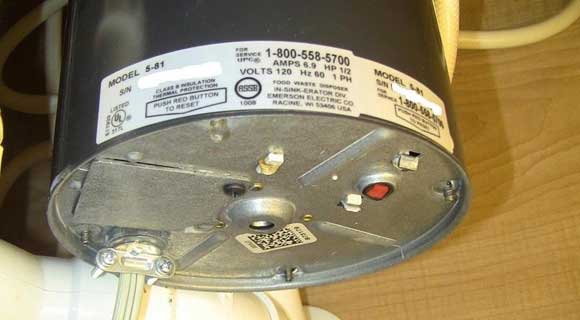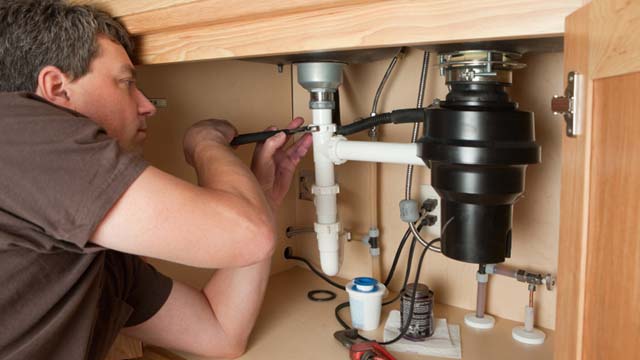Step-by-Step Techniques for Repairing a Leaky Garbage Disposal
Step-by-Step Techniques for Repairing a Leaky Garbage Disposal
Blog Article
Right here down the page you can locate some professional content around Why Is My Garbage Disposal Leaking From the Bottom?.

Waste disposal unit are necessary kitchen area devices that aid in taking care of food waste successfully. Nonetheless, a dripping waste disposal unit can be an aggravating and unpleasant issue to handle. Thankfully, many leakages can be taken care of easily with a couple of easy steps. In this post, we will review exactly how to deal with a leaking waste disposal unit successfully.
Intro
Garbage disposals are installed under kitchen area sinks and are designed to shred food waste right into smaller sized pieces, enabling it to travel through the pipes system easily. While these gadgets are normally reliable, leaks can happen gradually as a result of damage, loose connections, or damage to the unit.
Step-by-Step Guide to Repairing a Dripping Waste Disposal Unit
Switch off the Power
Prior to trying any type of repair services, make sure that the power to the waste disposal unit system is turned off to stop the danger of electric shock.
Find the Leak
Identify the exact area of the leakage and identify the reason
Tighten Connections
Use a wrench to tighten any type of loosened connections in between the disposal unit and the pipes system.
Change Seals or Gaskets
If the leakage results from worn seals or gaskets, get rid of the old parts and change them with brand-new ones.
Patching Cracks or Openings
For cracks or openings in the disposal unit, use epoxy or a suitable patching material to secure the damaged location.
Recognizing the Source of the Leakage
Prior to attempting to take care of a dripping garbage disposal, it is vital to identify the resource of the leakage. This can usually be done via aesthetic inspection or by conducting easy tests.
Visual Evaluation
Examine the waste disposal unit unit thoroughly for any type of indications of water leakage. Pay very close attention to locations around seals, gaskets, and link factors.
Checking for Leaks
One way to test for leaks is by running water through the disposal device and looking for any type of visible indicators of leak.
Common Causes of Leakages in Waste Disposals
Worn Seals and Gaskets
Seals and gaskets play a vital role in protecting against water from leaking out of the garbage disposal. Gradually, these parts can degrade, causing leaks around the disposal device.
Loose Connections
The links between the waste disposal unit and the plumbing system can end up being loosened over time, creating water to leak out during procedure.
Splits or Openings in the Disposal Unit
Physical damages to the garbage disposal, such as fractures or holes in the housing, can additionally cause leakages.
Tools and Products Needed for Fixing a Dripping Garbage Disposal
Before starting the repair service procedure, collect the required devices and materials, consisting of a screwdriver, flexible wrench, plumbing technician's putty, substitute seals or gaskets, and epoxy or patching material for repairing fractures or openings.
Testing the Waste Disposal Unit After Repair
Once the repair work is total, examine the waste disposal unit by running water with it to make sure that the leakage has been dealt with.
Preventive Maintenance Tips to Stay Clear Of Future Leaks
To avoid future leakages, it is important to perform normal maintenance on your garbage disposal. This consists of keeping it tidy, avoiding placing non-food things or difficult things down the disposal, and periodically checking for leaks or other issues.
Verdict
To conclude, fixing a leaking waste disposal unit is a reasonably straightforward procedure that can be completed with fundamental devices and products. By adhering to the actions outlined in this short article and exercising precautionary upkeep, you can maintain your waste disposal unit in good working problem and prevent costly repair services in the future.
What to Do About a Leaking Garbage Disposal
A leaking garbage disposal often goes unnoticed until you confront a sopping cabinet, a foul-smelling puddle, or an audible drip-drip-drip from the unit. The fix can be frustrating, too, because the leak can stem from a number of components in the system. Fortunately, with a little sleuthing, you can zero in on the leak and—depending on the exact location—stop the icky oozing and repair the component that caused it. Worst case scenario, if it turns out that the garbage disposal must be replaced, installing a new one is a reasonable do-it-yourself task for those with basic plumbing skills. Read on to keep the cash you’d otherwise hand over to a pro.
Prepare to find the leak
Prior to testing the garbage disposal for leaks, unplug it at the wall outlet and turn off the power from the breaker box to prevent electrical shock. Then insert a watertight sink stopper into your sink drain and wipe the unit dry with a clean cloth. In any handy container, mix a few drops of food coloring into a few cups of water, and pour the dyed water onto the sink stopper to help you locate the leak.
Investigate the source
the top, where the disposal meets the sink drain the side, where the dishwasher hose or main drain pipe connects to the disposal or the bottom of the unit Inspect each of these locations while gliding a light-colored rag over the unit; the dyed water will readily show on the rag and reveal the location of the leak. If a leak isn’t immediately apparent, remove the sink stopper and pour a few more cups of dyed water down the sink drain, then check for leaks again. Leaks near the top of the unit are more likely to show themselves while the sink is plugged, while side and bottom leaks are more noticeable while the sink is unplugged.
The metal sink flange that sits directly inside the sink drain is typically sealed around the top with plumber’s putty (a clay-like sealant) and then secured from under the sink with bolts. If the plumber’s putty deteriorates, or the bolts loosen, the flange can no longer form a watertight seal between the sink drain and the disposal—which could cause a leak at the top of the unit.
To reseal the leaky flange, you must first detach the garbage disposal. Start by loosening the screws securing the main drain pipe to the disposal, then loosen the screws in the metal clamp securing the dishwasher hose to the disposal and detach the drain pipe and dishwasher hose from the disposal. Loosen the screws in the mounting ring that connects the disposal to the metal mounting assembly beneath the sink, then pull down the disposal and carefully set it on a clean, dry surface. Loosen the bolts in the mounting assembly with a wrench, then pull down the mounting assembly and set it near the disposal.

Hopefully you liked our excerpt on How to fix a pretty consistent leak from my garbage disposal. Thanks a ton for spending some time to read through our blog. Do you know another person who is inquisitive about the subject? Please feel free to share it. We thank you for reading our article about The Handy Guide To Fixing Your Garbage Disposal Leaking.
Book Today! Report this page